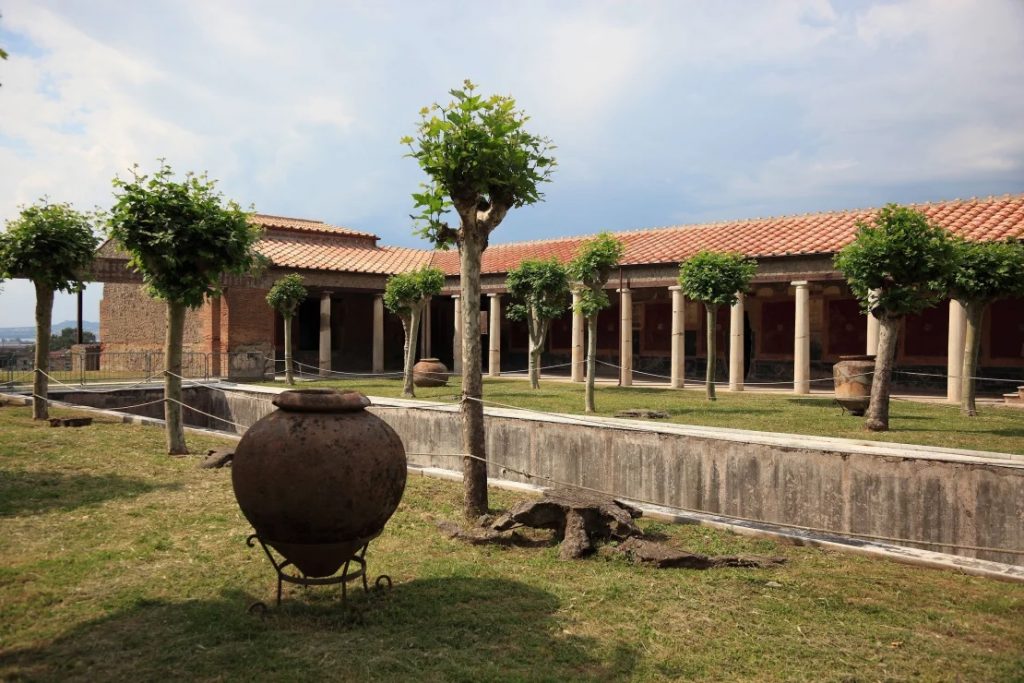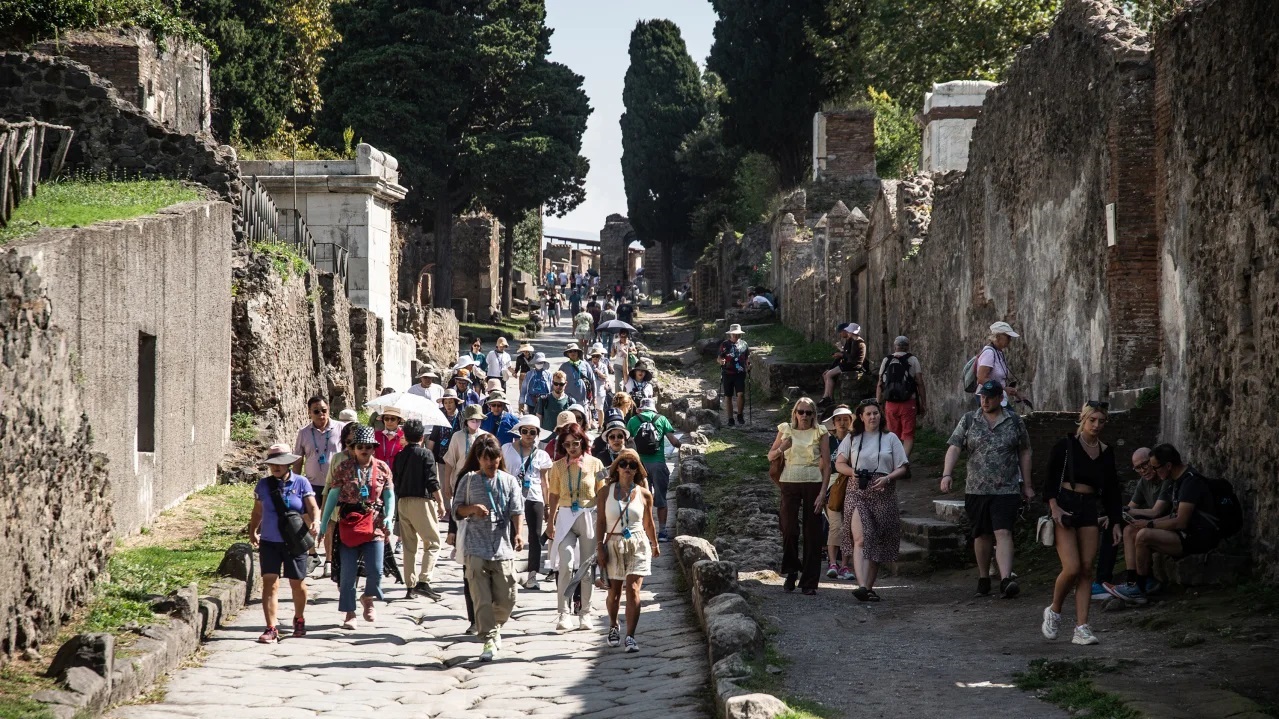CNN – It sounds like a mathematical problem. How do you make one of the world’s most famous ancient sites bigger?
You can’t build more of it. You can excavate more, but at immense cost.
So with ever more tourists cramming onto the site, the team behind the archaeological park of Pompeii have found a plan B – dispersing visitors around ancient sites that are further afield, with all-in-one tickets and shuttles laid on between the sites.
Grande Pompei will be a “parco diffuso” or scattered archaeological park, incorporating the archaeological areas of Pompeii itself, as well as villas at nearby Boscoreale, Oplontis (in the modern town of Torre Annunziata) and Stabiae, at modern Castellammare di Stabia.
In a visit to Pompeii last week, speaking to reporters, Italy’s culture minister, Gennaro Sangiuliano, dubbed it a “scattered museum,” calling it a “program of sustainable enhancement of the archaeological sites of the [archaeological] park and of the area surrounding it.”

The sites already form part of the Archaeological Park of Pompeii, but until now, they have been ticketed separately. They are also relatively far apart – the park’s sites span around 8 miles – with little public transport to some of them. A shuttle service around the sites – the Pompeii Artebus – was piloted in 2021.
Their inaccessibility means that visitor numbers are low. While nearly four million people visited Pompeii itself in 2019, just 55,000 made it to see Villa A (thought to have been owned by the emperor Nero and his second wife, Poppaea Sabina, whom he murdered) at Oplontis. Only 52,000 got as far as the two villas at Stabiae, Villa Arianna and Villa San Marco.
Yet Pompeii is stuffed to the gills. Visitor numbers rose from under 2.7 million in 2014 to over 3.9 million by 2019. In July 2023, a record 21,141 people visited the park in a single day.
2023 also saw the launch of a direct high speed train to Pompeii from Rome. However the train only runs on one Sunday per month, adding to the weight of daytrippers. The ancient city was the most visited heritage site in Italy on the last “Domenica al Museo” – state-run heritage sites have free entry on the first Sunday of the month.
Tickets for the ‘scattered’ site will be valid for three days, with free shuttles connecting all the sites.
The move will also see the reopening of the Antiquarium, a museum beside Boscoreale’s Villa Regina. It’ll have a room dedicated to the current excavations in Civita Giuliana, including the ceremonial carriage found in March 2021.
The Villa dei Misteri at Pompeii will also get new lighting which will better replicate the original lighting in the villa.
The move comes on the heels of the Grande Progetto Pompei, or Great Pompeii Project, which has overseen renovations across the sites for the past decade, funded to the tune of 105 million euros by the European Union.

Major excavations have taken place at Civita Giuliana, where the remains of horses were discovered in 2018, and a chariot in 2021, as well as a room that sheds new light on the lives of slaves. The project also saw the opening of two new museums in the area: the Antiquarium, which opened in 2021, and the Museo Archeologico di Castellammare di Stabia, Libero D’Orsi, housed at the grand Reggia di Quisisana palace in Castellamare di Stabia.
The project has also seen 70 buildings restored, an extra 40 hectares of the site opened for visits, and a four-kilometer accessible loop of Pompeii created for people with reduced mobility.


